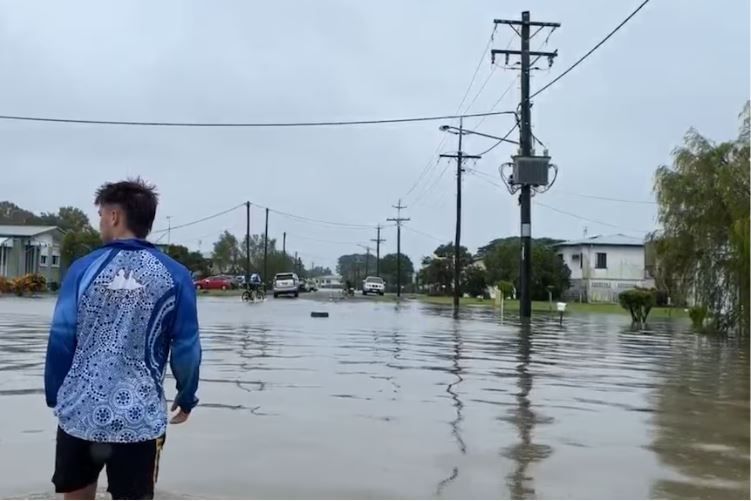- Sunday, 14 September 2025
Devastation from Queensland floods 'incredible', premier says
By Simon Atkinson, Townsville, Feb 4: Flooding in Australia has inflicted "incredible" devastation on communities across northern Queensland, the state's premier has said, even though conditions are easing faster than predicted.
Thousands of evacuated residents began returning to their homes on Tuesday, but it is feared hundreds of properties and businesses have been inundated. One woman has died.
"It's a disaster that's going to test the resolve of people," Queensland Premier David Crisafulli told the ABC.
Parts of the region have been battered by nearly 2m (6.5 ft) of rain since Saturday, prompting ongoing flood warnings and blackouts - but the premier said weather conditions had been "really kind" in recent hours.
In Townsville, locals woke on Tuesday to grey skies and drizzle, and the news that predicted flooding levels had not materialised there. It was a stark contrast to the intense downpours which have battered the region over the past few days.
"We believe that the danger has passed," Townsville Local Disaster Management Group chair Andrew Robinson told reporters.
Pointing to earlier forecasts which had suggested up to 2,000 Townsville homes could have faced flood risks, Crisafulli said that "the city had dodged a bullet".
Local resident Jo Berry told the BBC she and her family were among those returning home on Tuesday, after spending a sleepless night monitoring the rainfall.
"People talk about PTSD when it rains here and I totally understand," says Ms Berry, formerly from Leicester in the UK.
"We've been in the house here for over 20 years, and have been through a few cyclone events and the 2019 flooding so it is not our first rodeo," she adds, referring to a flooding disaster which caused A$1.24bn (£620m; $770m) in damage.
On Monday night, other local residents told the BBC they were "on a knife edge" as they waited to see whether their houses would survive.
But further north in the state, power outages and damaged roads have made it difficult to assess the full extent of the destruction in towns such as Ingham and Cardwell.
Crisafulli said early reports suggested the damage was "quite frankly incredible" and that Ingham, which is almost entirely without electricity, "remains the biggest challenge".
"There are people who have been inundated at home, in their businesses and in their farms," he told reporters on Tuesday.
Footage published in local media showed long lines at the town's supermarket as people waited for critical supplies. Crisafulli said that amid the blackout the local hospital was operating as normal, and a petrol station was open.
The flooding has caused damage to the area's homes, crops and coastline, local MP Nick Dametto said in a video posted online.
"The inundation is something that I have never seen before," he said.
Home to fewer than 5,000 people, Ingham is already reeling after a 63-year-old woman died when a State Emergency Service (SES) dinghy capsized during a rescue attempt on Sunday.
More than 8,000 properties remain without power across northern Queensland, according to the state's energy provider, and the partial collapse of a critical highway continues to hinder efforts to assist some of the hardest-hit areas.
Crisafulli said the recovery effort would "take some time" and that the priority in the coming hours would be to work with the army to get power generators to isolated communities and "bring them back online".
He added that federal funding would help reconstruct the battered Bruce Highway - the state's main thoroughfare which stretches 1,673km (1,039 miles) from the south.
Located in the tropics, northern Queensland is vulnerable to destructive cyclones, storms, and flooding.
Speaking to the BBC in Townsville, Scott Heron, a local resident and climate expert, said the latest disaster was not unexpected.
"For a long time, climate scientists have been clear that extreme weather events will become more extreme, and we are seeing that," said Prof Heron, who works at James Cook University and is the Unesco Chair on Climate Vulnerability of Heritage.
Prof Heron urged politicians to consider this as they planned recovery and rebuilding efforts, such as to the Bruce Highway.
It would be "wasting public money" if infrastructure planning, particularly for long-term projects including roads and bridges, did not "incorporate changing threats due to climate change", he said.
















